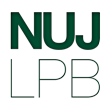Ever since I first started out with a camera I’ve heard talk of the “good old days”. First, it was of a time when Picture Post was on sale at every corner shop, and photojournalists ruled the world. A little later, it harked back to the era of Don McCullin at the Sunday Times, and the once-glorious weekend colour supplements. Later still, the Independent magazine, under Colin Jacobson, was held up as the last survivor of a lost golden age and the great tradition begun by Bert Hardy, Stefan Lorant, Cartier-Bresson and the rest. Then it too went the way of all the others.
It’s a seductive take: right now there are many reasons why the “concerned photographer” (a term current back then) might think their chosen medium is on a downward path. Magazines, and many newspapers, are dominated by celebrity and lifestyle trivia, with virtually no space for serious picture stories; staff photographers on the nationals are an almost extinct species; freelancers are ten a penny, their ranks swollen by digitally-equipped wannabes and hobbyists prepared to work for peanuts; commission rates and repro fees have been static or falling for years, and copyright is under threat from big business interests and business-friendly legislators. Many photographers are feeling very hard pressed indeed.
The days of news weeklies filled with extended picture stories were undoubtedly a high point in the relatively brief history of print photojournalism, but their demise was not the end of the line. Today, the web is spawning new outlets and multimedia forms that expand the ways in which photography can be used to tell stories. And pictures are everywhere, made and seen in numbers and formats that would have been unthinkable before the advent of digital technology. It is true that the majority are dross, and too many picture editors seem happy to make choices based on cost, not quality, but the new technology has created at least as many opportunities as problems.
Many of those problems are the result of its revolutionary impact on publishing. The industry is struggling to adapt to a completely new business model – or possibly several of them. And it’s only part way done. The big question is, how do you make money distributing content on the web, when everyone expects it to be free? Cut costs with copyright grabs and rate cuts? Boost revenues with paywalls and advertising? Probably all of the above and more, with no-one sure what is going to work, and who will go to the wall.
We are in a period of transition, but the death of photojournalism is not inevitable. Sooner or later, viable revenue streams for publishing on the web will be established by the big corporate players, and smaller niche companies will follow in their wake (or vice versa). Who knows – even print might survive in some form or other. However it works out, there will still be an enormous demand for photography. And if paid-for content is to stand out in a web awash with oceans of cheap-and-cheerful mediocrity, dross will not be good enough. Quality will be at a premium, and quality will only be possible if the new reality is a sustainable one for photographers. Cutting rates and grabbing rights isn’t going to work in the long term.
So maybe there are good old days still to come. Of course, to get to there we have to find ways of surviving the short term. Undoubtedly, as a first step, that survival requires a vigorous defence of rates and rights. As for what else – answers on a postcard, please.
Phillip Wolmuth is a freelance photographer and branch committee member. This article originally appeared on Phillip’s blog.
Comment pieces from branch members are always welcome. Articles should be 400-600 words long and sent to [email protected]



 1
1


